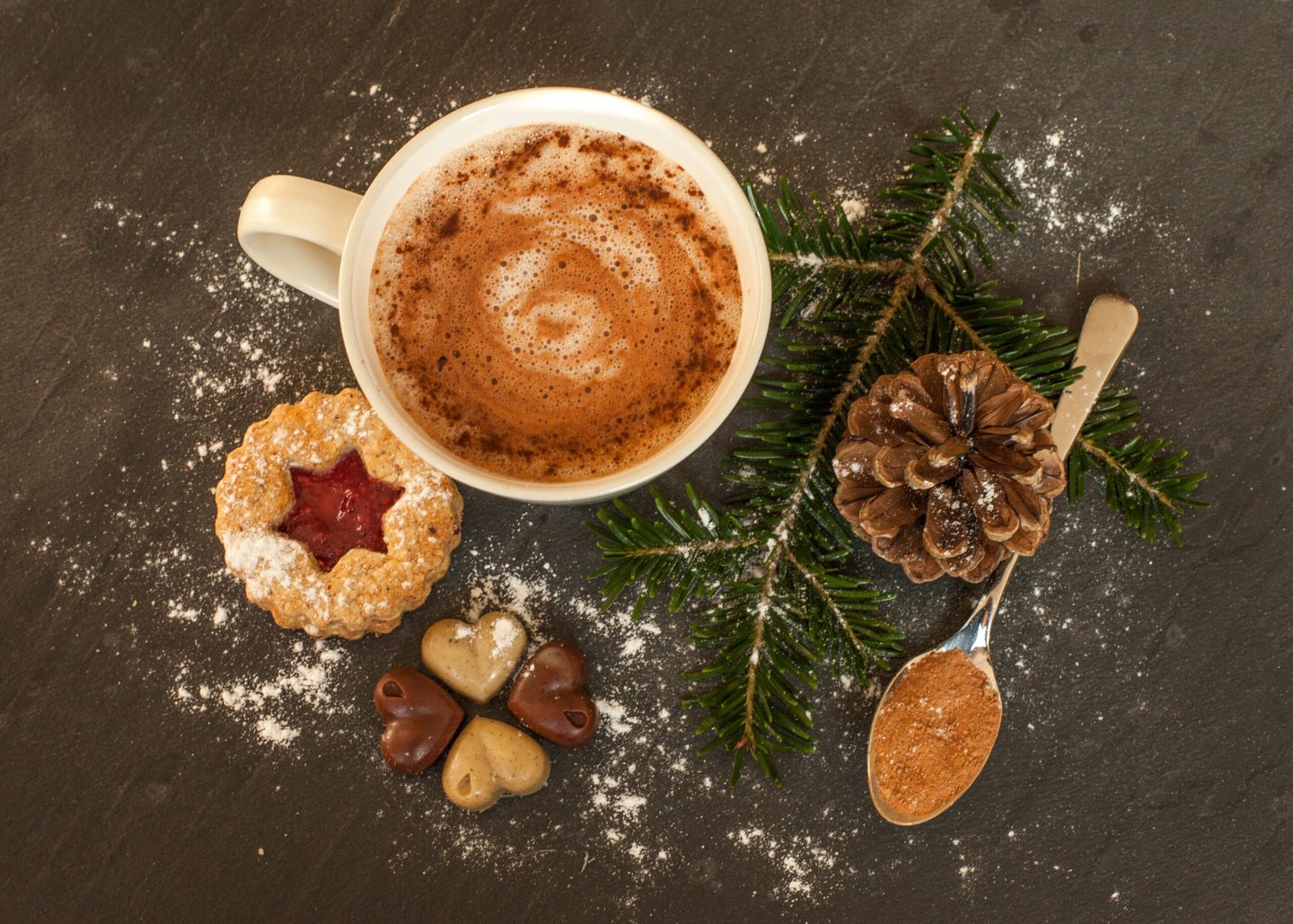Instant hot cocoa is a starchy disaster. Here’s how to make your own.
Swiss Miss is just a miss.


There is a time and a place for instant hot cocoa. It’s called “when you want it right this second and have nothing better on hand.” Hot chocolate mix is fine in a pinch, but the reality is that the homemade variety is far tastier, and surprisingly easy to make. Plus, you can stir it up in big batches—because let’s be honest here, once one person wants hot cocoa, everyone else does too.
In another advantage over the instant type, the homemade variety requires a lot less frantic stirring. Coaxing cocoa powder to dissolve into a liquid can be challenging, and often results in little particles floating on the top. This happens because cocoa powder is starchy, and when you hydrate a starch, it expands.
Because dry cocoa particles tend to form clumps, as soon as you try to add milk or water, the outside edges of each chunk get wet, expand, and seal off the inside, leaving the inner powder dry. You can break up some of these lumps with your spoon, but when you’re dealing with a cup full of liquid, some blobs will always evade your efforts. Heating the liquid helps, but often you’ll still end up with tiny clumps that make your hot cocoa grainy.
A better strategy is to first add a small quantity of liquid to the dry ingredients and stir to make a paste. In a smaller volume with less liquid, the clumps can’t escape your spoon (or whisk), so it’s easy to break them up and hydrate all of the cocoa powder. Adding sugar to the mixture also helps, since sugar dissolves easily and helps break up clumps of dissolve-resistant cocoa.
Even if you escape the graininess problem, instant hot chocolate doesn’t add much of a thickening agent, so it also requires some extra component to make it seem richer than it really is. Some mixes do this with soy lecithin, others with cornstarch. Some even have milk powder in them so that customers who mix their cocoa with water can have some semblance of a dairy product.
But listen, it is so easy to make your own easy-to-stir, naturally rich hot chocolate. With this technique, you’ll be the hit of your family gatherings. Here’s how.
Ingredients
- 2 ¼ cups milk
- 1 tablespoon cocoa powder
- 2 teaspoons sugar
- Pinch of salt
- 2 ounces semi-sweet chocolate
- 1 ½ teaspoons vanilla extract
A word about the ingredients you choose.
First: the milk. Please do not use skim milk. Fat is a key part of what makes hot chocolate taste good, and frankly, the end product won’t end up being low-fat anyway. Use at least 2 percent (some recipes even say to use half and half or cream) for a richer taste.
Second: the cocoa powder. In most grocery stores, you’ll find both “dutch” and “unsweetened natural” varieties. Dutched (or dutch-processed) cocoa has been washed with a potassium carbonate solution that neutralizes its acidity. Dutched cocoa has a more mellow flavor, while natural cocoa will be a bit more astringent. That doesn’t make much of a difference for hot chocolate.
However, in baked goods, dutched cocoa will react differently in the oven. Recipes for cookies or cakes with baking soda in them, which is basic, depend on a reaction with an acid (like unsweetened natural cocoa) to leaven them. Using dutched cocoa wouldn’t work for those recipes, and would require a neutral baking powder instead of the soda.
Anyway, for hot chocolate, I prefer the taste of the dutched variety—but you can just use whatever you have on hand.
As for the chocolate, feel free to use a milk chocolate if you don’t like the more intense flavor of the semi-sweet variety. Serious chocoholics can use a darker chocolate, but frankly, the cocoa powder adds a lot of deep chocolate flavor already, so be careful that you don’t end up with a too-intense beverage. As for the form, you can use squares or chips, but chips will be easier to mix in.
Instructions
- Put the cocoa powder, sugar, and salt into a saucepan, then add just a few tablespoons of milk. Turn the heat on low and whisk the mixture around to form a paste. If not all of the cocoa mixes in, then add a bit more liquid, but don’t overdo it—lumps will be far harder to break up once you pour in the rest of the milk.
- Add the rest of the milk and increase the heat to medium low. Add the chocolate (chopped up into small bits if you’re not using chips) and stir constantly to make it melt smoothly into the liquid.
- Keep heating until the mixture reaches a light simmer, but don’t bring it to a full-on boil. Boiling milk changes its protein structure and gives it a different flavor. Plus, it bubbles over easily and makes a huge mess on the stove.
- Once everything is creamy and smooth, add the vanilla extract, stir to combine, and take the cocoa off the heat.
- Serve! The traditional marshmallow topping is great, as always, but homemade whipped cream is also fabulous. Just whisk heavy cream until it gets nice and thick, then add a little bit of sugar.
Feel free to adjust this recipe to your tastes. If it’s too rich, add more milk. If not flavorful enough, toss in a few more chocolate chips. You can even add spices, like cinnamon and nutmeg, for extra holiday cheer.